Integrate an HR Analytics Software
HR analytics software is most commonly used by an HR department and HR professionals to track and analyze HR data including employee performance, turnover and other key HR metrics. Using these cloud-based analytics tools together with various business data sources can enable organizations to improve the efficiency of HR processes and areas of improvement. Predictive analytics functionalities can also help inform policy and structural decisions and their impact on turnover, performance, and employee engagement. Ditch the spreadsheet for agile business analytics and data visualization.
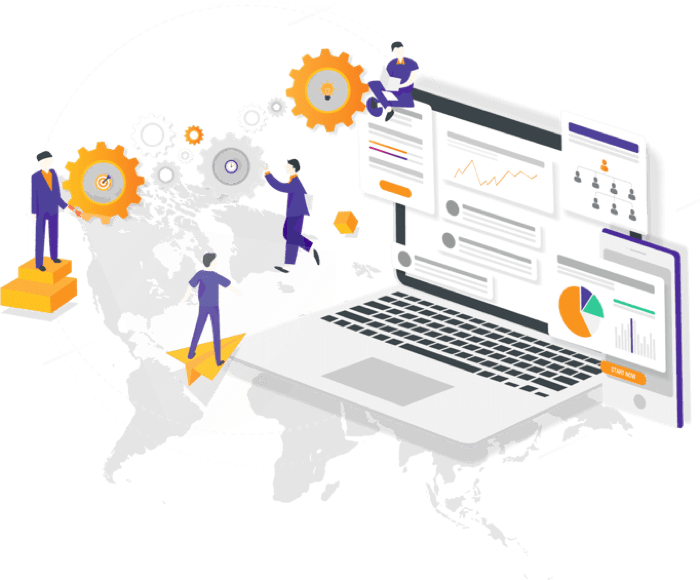
Your connected tools
Streamline the tracking and analyzing of HR data using the tools connected to PeopleSpheres.

Reflect
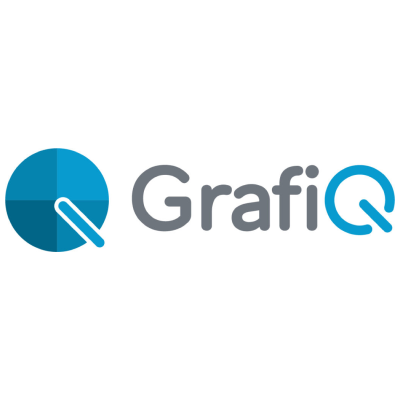
GrafiQ
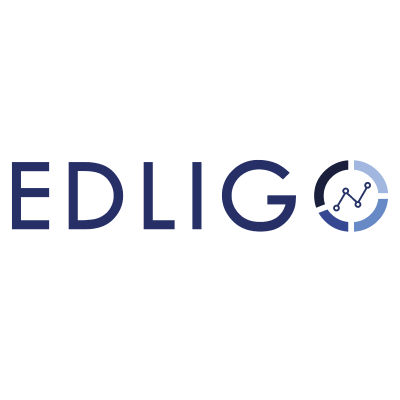
Edligo
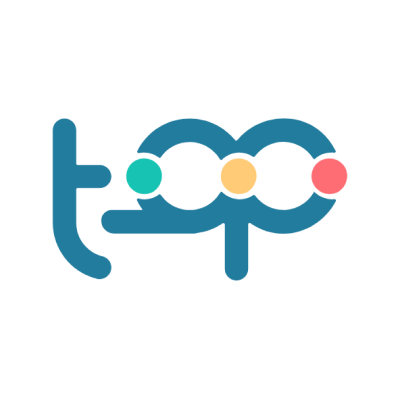
T.O.P Turnover
Discover all the tools connected to PeopleSpheres
See all the toolsStart Making the Most of Big Data
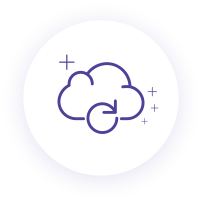
Analyze Data from Multiple Sources
PeopleSpheres pulls your HR data into a single platform. Leverage this unified data hub by adding an analytics software or a business intelligence tool to your integrated tech stack.
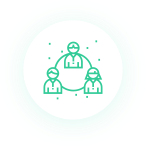
Empower your HR Team
Want more meaningful metrics? By using data from multiple sources and advanced analytics, your team can tell a more compelling story about your workforce.
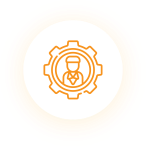
Automate HR Reporting
No more Excel spreadsheets. With an HR analytics tool, you can create reports, visualizations, and dashboards to stay on top of the continuous requests for data.
Make Data-Driven and Strategic HR Decisions
Using HR analytics software is the first step to making more data-driven decisions in HR. Easily access data to inform your HR initiatives and programs such as training and development or employee DEI initiatives. With the right data, you can feel more confident in your decision-making process. Most importantly, you can rest assured that you have a way to measure the success of any change that is implemented.
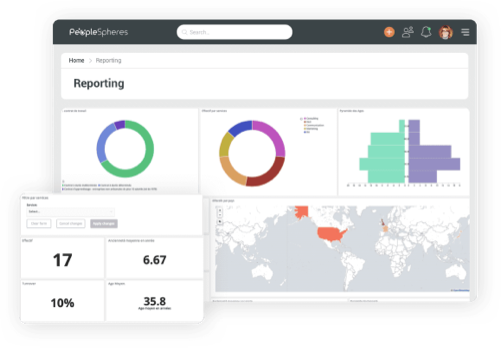
Free Up Time with Efficient HR Process
Wish you could spend less time doing administrative work and more time on initiatives that make a real impact on employees’ lives? Identify actionable insights to improve HR processes. Find out how long it takes to hire, how many payroll corrections need to be made each month, the number of incomplete performance evaluations, or which training courses have the lowest completion rate.

Address Real Employee Concerns
Enhance the employee experience by using an HR analytics software to identify trends and issues. HR professionals can address concerns and improve the employee experience by addressing real concerns. Employee engagement and employee retention data can be used to find out whether there is a management issue to address in a particular department or an organization-wide policy that could be impacting staff turnover.
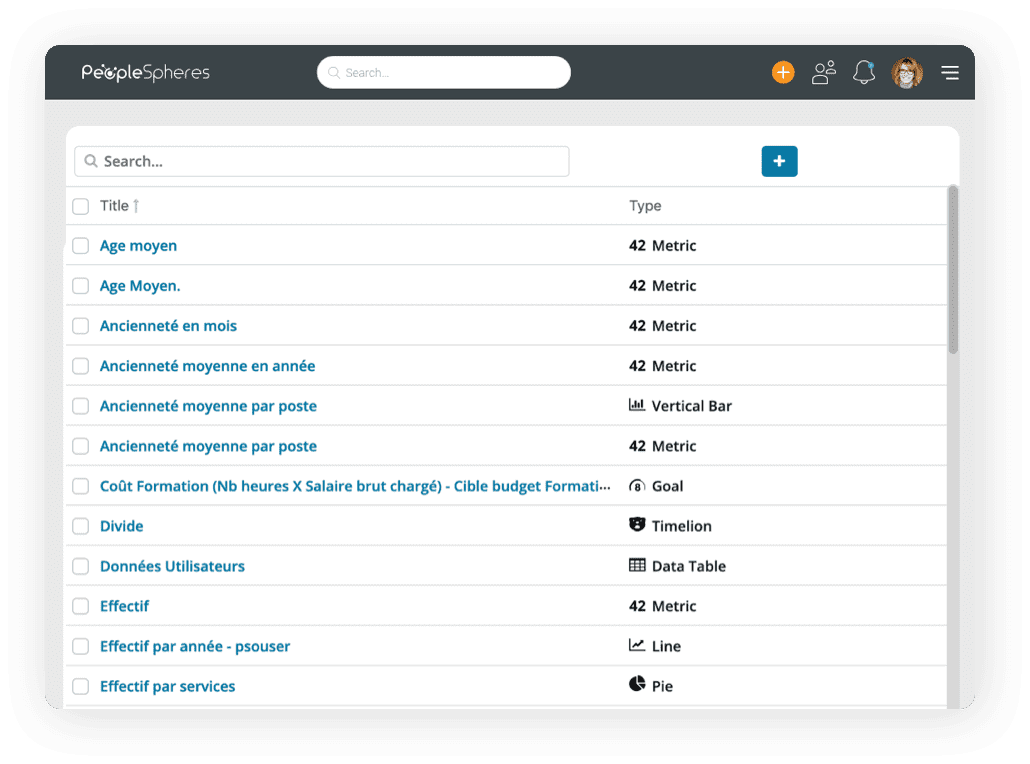
Promote Transparency and Build Trust
Being transparent with your data analytics can take your organization to the next level. Make information readily available with dashboards and secure data sharing. Not only does this make your job easier when you need to make a decision, it creates a sense of trust across teams. HR benefits from access to data in one place, and managers and business leaders can access what they need to get their job done without waiting for a response from an HR admin or analyst.

HR Analytics Software Buyer's Guide
What is HR analytics software?
HR analytics software refers to a sophisticated tool that facilitates the analysis and reporting of human resources data. The software collects, organizes, and interprets data related to employee performance, recruitment, retention, and overall workforce management. By leveraging predictive models and data visualization, HR analytics software provides insights that can inform strategic decision-making, enabling businesses to optimize their human capital and align HR practices with organizational goals.
The benefits of HR analytics software
Data-Driven HR Decision Making
The most significant benefit of HR analytics software is its ability to enable data-driven decision-making. Traditional HR practices often rely on intuition and experience, but analytic software brings hard data into the equation. This addition provides a solid foundation for strategic planning and reduces the risk of subjective biases.
Talent Acquisition and Retention Strategies
HR analytics software plays a critical role in formulating effective talent acquisition and retention strategies. With the ability to analyze recruitment data, companies can discover the most effective channels for attracting top talent.
Similarly, by examining employee turnover rates and reasons, businesses can devise specific retention strategies that address workforce concerns and improve overall employee satisfaction.
Workforce Productivity and Engagement
Lastly, HR analytics software helps in enhancing workforce productivity and engagement. By analyzing data related to employee performance, absenteeism, and feedback, organizations can identify factors that boost productivity and engagement. This understanding leads to the implementation of practices that not only maximize employee output but also contribute to a positive work environment.
Key components of HR analytics software
Data Integration and Data Sources
Data integration is a critical feature of HR analytics software. It allows the software to pull in data from various internal and external sources, creating a comprehensive, centralized database for analysis. These sources may include HRIS (Human Resource Information Systems), payroll systems, performance management software, and external labor market data.
The robust integration capabilities ensure seamless data collection and synchronization, eliminating data silos and providing a holistic view of human resources metrics.
Data Visualization and Reporting
The data visualization component of HR analytics software transforms complex data sets into easily understandable visual formats such as graphs, charts, and dashboards. This feature allows HR professionals and business leaders to quickly grasp trends, patterns, and correlations in the data. Coupled with automated reporting capabilities, users can generate insightful reports in real-time, facilitating timely decision-making.
Predictive Analytics and Forecasting
Predictive analytics is another key feature of HR analytics software. Leveraging machine learning algorithms and statistical models, the software can forecast future outcomes based on historical data. For instance, it can predict employee turnover, the success rate of recruitment channels, or future staffing needs.
This forecasting capability allows businesses to proactively address issues, plan effectively, and stay ahead of HR challenges.
Employee Engagement Surveys
HR analytics software often includes functionality for creating and administering employee engagement surveys.
These surveys gather valuable feedback directly from employees, contributing to data on workforce sentiment, job satisfaction, and engagement levels. With advanced analytics, the software interprets survey results, providing actionable insights that guide initiatives to boost morale, productivity, and organizational loyalty.
How much does HR analytics software cost?
Pricing Models
There are typically two main pricing models for HR analytics software: subscription-based and perpetual licensing.
The subscription-based model, also known as Software as a Service (SaaS), involves paying a recurring fee, usually monthly or annually. This model often includes regular updates, maintenance, and customer support in the overall cost.
On the other hand, the perpetual licensing model requires a significant upfront payment, granting the user ownership of the software for life. While this model may appear more expensive initially, it can be cost-effective in the long run for businesses planning on long-term use.
Cost Factors
Several factors can influence the cost of HR analytics software. These include the size of the organization (number of employees), the complexity of the HR processes, the level of customization needed, and the required integrations with other software systems.
It’s crucial for businesses to thoroughly assess their specific needs and budget constraints before deciding on a particular HR analytics software.
How to choose the best HR analytics software
Assessing Your Organization’s Needs
Firstly, it’s crucial to clearly identify and assess your organization’s needs. This includes understanding the specific HR metrics you wish to track and analyze, the level of detailed reporting required, and any unique features or capabilities that align with your HR practices.
PeopleSpheres allows you to choose the analytics tool that best aligns with your unique business needs. It’s a flexible platform that integrates a wide range of HR functions, catering to businesses of all geographies and sectors.
Integration with Other HR Tools
Next, consider the software’s integration capabilities. The ability to seamlessly integrate with existing HR tools and systems is vital for comprehensive data analysis. This ensures that all relevant data from disparate sources is centralized in one place, improving accuracy and efficiency in reporting. PeopleSpheres excels in this aspect, providing robust integration capabilities that allow the software to connect with various HRIS systems, recruiting software, and other HR management tools.
Ease of Implementation
Finally, ease of implementation should be a key consideration. The best HR analytics software should be user-friendly and should not require a steep learning curve to operate. It should also offer reliable customer support to assist during the implementation phase and beyond.
Emerging trends in HR analytics software
AI and Machine Learning in HR Analytics
In an era where data is growing exponentially, Artificial Intelligence (AI) and Machine Learning (ML) have emerged as game-changers in HR analytics.
Imagine a scenario where an HR manager is grappling with high employee turnover rates. Traditional methods would typically involve diving into piles of spreadsheets and manual data analysis, a task that is both time-consuming and prone to errors.
Now, introduce an HR analytics software equipped with AI and machine learning. The software not only automates data analysis but also uncovers hidden patterns and correlations in employee behavior, providing predictive insights on potential turnover risks. This capability enables the HR manager to proactively devise retention strategies, drastically reducing turnover and enhancing overall workforce stability.
Diversity, Equity and Inclusion Analytics
Now, picture an organization striving to foster a culture of diversity, equity, and inclusion (DEI). They understand the immense value a diverse workforce brings, from promoting innovation to driving better business performance. But, how can they measure their progress?
Enter DEI analytics, which allows businesses to track a wide range of DEI metrics, such as gender, ethnicity, and age representation across different organizational levels. Using these insights, the organization can identify areas of improvement, set tangible DEI goals, and monitor their progress towards creating a truly inclusive workplace.
Real-Time HR Analytics
Lastly, consider a fast-paced company operating in a highly dynamic industry. To stay competitive, they need to make quick, informed decisions based on real-time data. This is where real-time HR analytics comes into play.
Unlike traditional analytics that rely on periodic reports, real-time analytics offer live data updates, providing an up-to-the-minute snapshot of HR metrics. This means the company can instantly identify issues like sudden spikes in absenteeism or unexpected changes in employee performance. With these real-time insights at their fingertips, they can swiftly intervene to address any emerging HR issues, ensuring they maintain a productive and engaged workforce.
Why get an HR analytics tool through PeopleSpheres?
With PeopleSpheres, you have the freedom to choose your HR analytics solution that works best for your organization.
Our partners offer a range of essential features, including data integration, visualization and reporting, predictive analytics, and employee engagement surveys to ensure that you can track, analyze, and report on the specific metrics that hold significance for your organization.
The PeopleSpheres platform integrates seamlessly with other HR tools, creating a unified data pool for precise, comprehensive analysis.
In terms of future HR trends, PeopleSpheres stays ahead of the curve, supporting AI and Machine Learning capabilities for advanced analytics and predictive insights. The Store also offers solutions for DEI analytics and real-time HR metrics tracking, ensuring your organization can readily adapt to evolving HR landscapes and maintain a competitive edge.
Talent management
HR analytics software can help organizations identify top performers and identify potential leaders within the organization. This can be useful for succession planning and for identifying potential candidates for promotions or other leadership positions. Create a competitive advantage for your organization with data mining and data analytics.
Performance Management
Deploy an HR analytics software for tracking and analyzing employee performance data, such as attendance records, productivity metrics, and customer satisfaction ratings. This can help organizations identify areas where employees may need additional training or support, or where they are excelling. Data integration in PeopleSpheres can make a performance metric more insightful by leveraging all data from other management software such as onboarding tools or an applicant tracking system.
Workforce planning
HR analytics software can help organizations in forecasting future workforce needs and identify potential skills gaps and staffing needs. This can be useful for planning recruitment and training efforts. Dashboards can also be created so that managers can visualize this type of real-time analytics or drill-down to specific employee data to make better decisions.
Diversity and Inclusion
HR analytics software can help organizations track and analyze data on employee diversity and inclusion, such as the representation of different demographic groups within the organization. This can help organizations identify areas where they may need to focus on improving diversity and inclusion efforts.
Benefits and compensation
HR analytics software can help an HR manager track and analyze datasets on employee benefits and compensation, such as the types of benefits offered and the cost of those benefits. This can be useful for identifying cost savings opportunities and for making informed decisions about benefits offerings.
Ready to integrate analytics software?
Our team of experts are here to help.